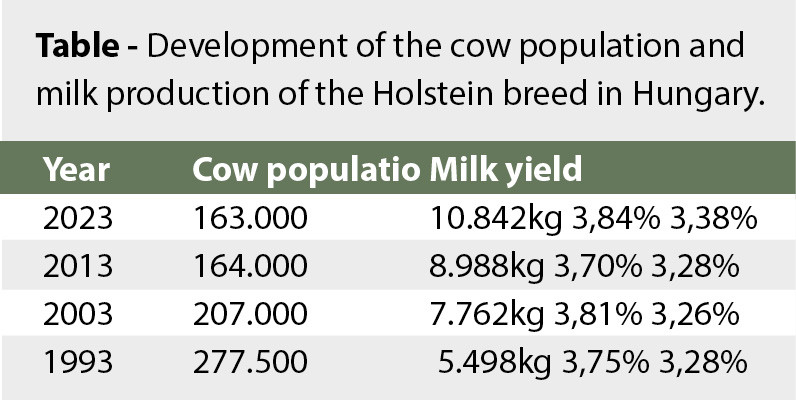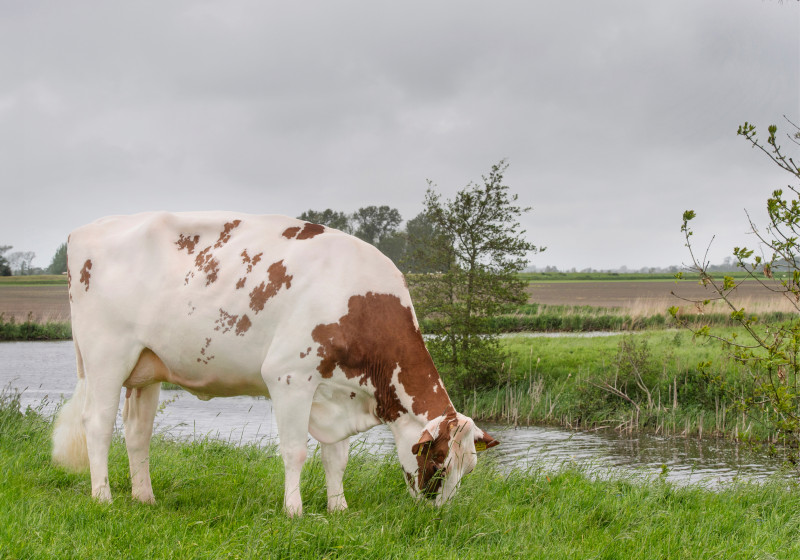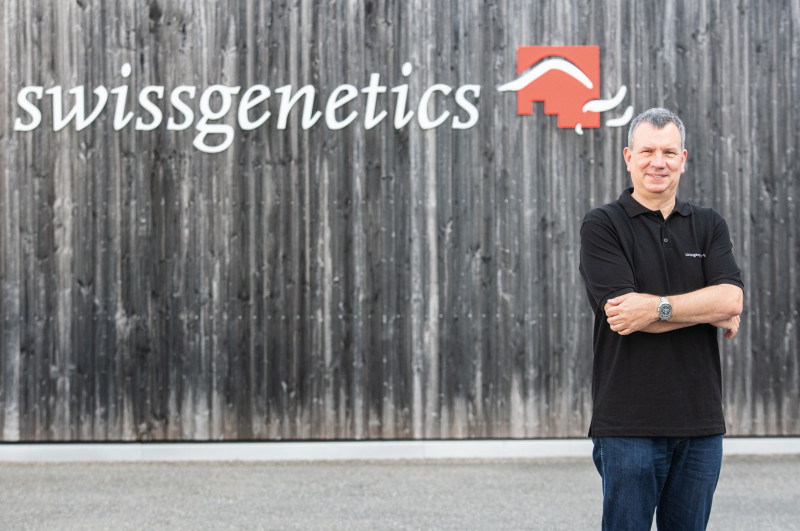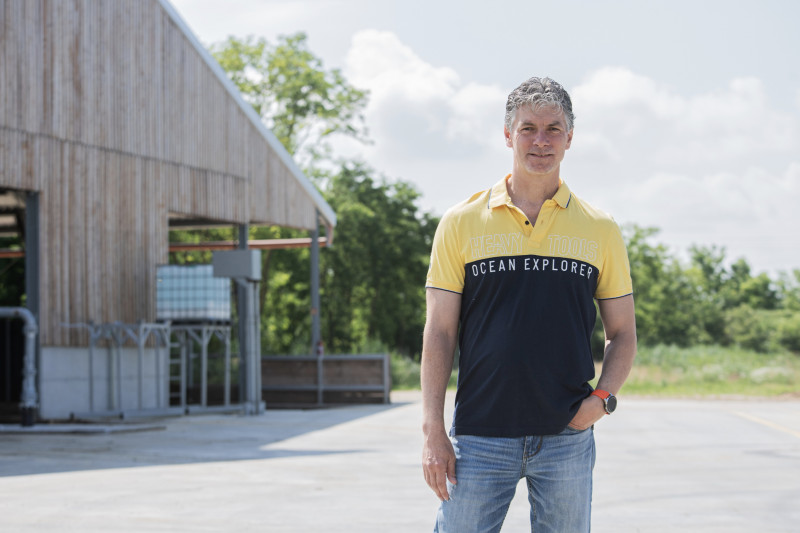
Tamás Sebők is an internationally renowned judge and the head classifier for Holstein Hungary.
Hungary’s agriculture is shaped by the high number of agricultural operations, from small family farms to large, modern businesses. Cash cropping has traditionally played an important role, though animal breeding and dairy farming have significant roles as well. In recent years, Hungary has made impressive progress in the modernization and technological development in agriculture. Modern dairy farms and top-quality feed guarantee good conditions for high-producing Holstein cows.
MEINHARD HUBER CHRISTINE MASSFELLER
We travelled to Hungary for the first time at the beginning of June to learn about Holstein breeding and the philosophy of the Hungarian Holstein farms and their respective breed association. The welcome was more than warm and the excitement about the report on Hungarian Holstein breeding was high. Our trip led us into the centre of Budapest where we had a very interesting meeting in “Animal Husbandry House.” This building is not only the home of the Holstein breeding association, but also the headquarters for the beef, sheep, goat and horse herdbooks. On the fourth floor, 13 dedicated employees look after the concerns of Holstein breeders across the whole country. A conversation with business director László Bognár and head classifier Tamás Sebők gives us an insight into the special developments of today’s Holstein breeding. Hungary’s voyage with Holstein cows began more than 50 years ago in the late 1960’s and early ‘70’s with the import of 25,000 Holstein heifers from North America and later 10,000 from western Europe. Additionally, 1 million doses of semen were brought in along with 100-150 live bulls and embryos. ‘This decisive moment marked the beginning of a quick and strategic transformation of the Hungarian dairy cow population,’ explains Bognár, who has been active as breeding and business director since 1995. The traditional dual-purpose Simmental breed was swiftly replaced by Holsteins. This dynamic shift, made possible through a fortunate combination of scientific understanding and political will gave Hungary the nickname “small America in central Europe.” Scientists successfully convinced politicians to make this import possible even during the Cold War and thereby showed the power of cooperation between science and politics to achieve important agricultural progress. National milk production increased and made important foodstuffs available and fulfilled the steadily growing demand for healthy dairy products. In Hungary there is a long history of milk recording and herd improvement. The company Livestock Performance Testing was founded in 1910. The Golden Herdbook was founded in 1938 for outstanding breeding and high production. In 1995 the Holstein association was newly founded and since then more than 1,300 cows with a lifetime production of over 100,000kg (220,000lb) have been registered.
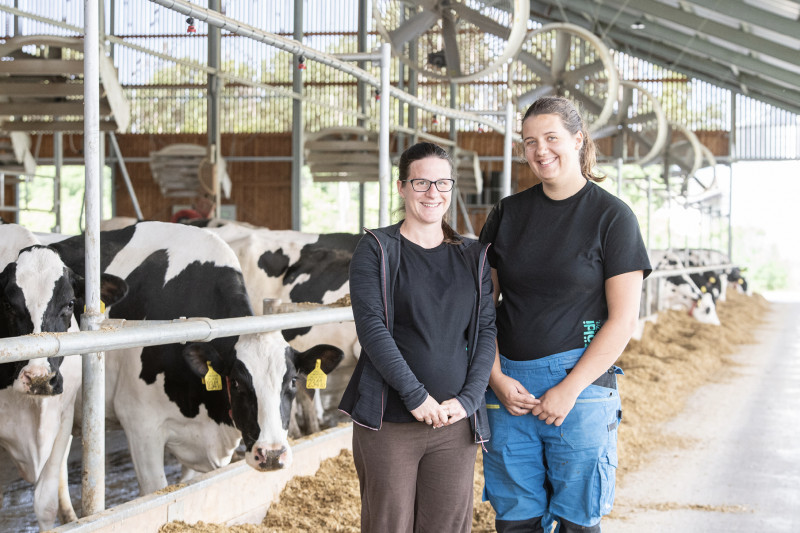
The hard-working women Emöke Bakó and Zsófia Hermán-Mészáros are responsible for the herd management at the Kisalföldi Mg Zrt. farm.
BREEDING PROGRAM
The Hungarian Holstein Association was founded by 21 big farms and included roughly 24,636 cows. The entire framework was organizationally tailored and a lot of information about effective breeding structures was brought in from North America and western Europe. Through this, the development was quite rapid and after founding membership grew to over 900 farms with a cow population of over 248,000 cows. Due to global development, the number of farms and the cow numbers have declined. Currently there are about 400 farms with almost 170,000 cows on milk recording and in the herdbook. 90% of the current cow population is on milk recording. Every year, between 35-40,000 young cows are classified. ‘Six classifiers are active across the country and four times a year we hold a harmonization clinic,’ -explains head classifier and renowned judge Tamás Sebők. The average herd size is 453 cows, which makes them the global leader for average herd size. In 2023, the average production (305 days) was 10,842kg (23,852lb) 3.84% 3.38%. in the last two decades the average national milk yield increased by more than 4,500kg. One of the primary activities includes the management of a balanced breeding program. Pedigree documentation, organization of shows as well as engaging and informative technical workshops and meetings are further responsibilities. Every year there is a national show in the south of Hungary where over 100 cows are exhibited. Furthermore, members receive the national Holstein magazine six times a year, free of charge. The generation of technical publications like sire catalogues is included. Four years ago, a comprehensive farm genomic selection program named “HUNGENOM Project” was initiated. The goal is to test as many female animals as possible and to further breeding progress. To date, there are about 57,000 females genotyped and in the future there are to be many more. The Hungarian state is currently financing about 70% of the costs. The breeding values are collected through the HGI (Holstein Global Index). This is based 45% on production (fat and protein), 32% on type (legs and udder), and 23% on health traits (SCS, longevity and calving ease). ‘Reliable and functional legs and udders are one of the most important traits for our farms,’ comments Sebők.

Modern dairy facilities and top management guarantee high milk production for Holsteins in Hungary.
AI STUDS
In Hungary there used to be three AI studs, though this has now been reduced to only one. Génbank-Semex Magyarország Ltd. or Semex Hungary Ltd. is owned 100% by Semex Canada and is situated in the south of the country, where many famous bulls are kept, like Ranger-Red. The AI stud has almost 100 sires and every year it purchases 15-20 bulls. They come primarily from Italy, Germany and the Netherlands. Some bulls come from Hungarian herds that participate in ET programs. Imported embryos come mostly from North America and western Europe. Semen import in Hungary is over 90% and there are almost no trade barriers other than unfavourable animal health or genetic conditions, Bognár explains. When we looked at the top-5 most used sires from 2023, we found the Pursuit son All.Nure Giovanni at the top. He was followed by OCD Parfect Soysauce (Parfect-Legacy) and the daughter-proven Renegade son Capone. Then come two more Pursuit sons in Peak AltaTrackster and K&L Mingus, who found a lot of popularity on farms.
EXPEDITION
Our tour included several herd visits. The trip to Kisalföldi Mg Zrt. was very interesting. This company has three locations which milk a total of 2,500 cows. The site we visited had 850 cows, of which 660 were milked with robots. Modern technology and top feed conditions guarantee high animal welfare and the cows average 45kg (99lb) milk per day. ‘We look for simple, problem-free cows with high milk yield,’ shares the herd manager Emöke Bakó. Only bulls that are homozygous for beta casein A2A2 are used. ‘Currently we don’t get paid any more for the milk, but we want to be ready for the future,’ says the manager. Polled bulls play no role and cows that are not of genetic interest are bred to beef bulls. Heifers and cows in the first lactation are bred 100% with sexed semen. ‘We cannot ask our cows how they are feeling, but we can observe them,’ shares the business director Szajkó Lóránt. ‘We want cows with the best feet and legs and udders for the robots. It is the small details that make a big difference,’ he further explains.
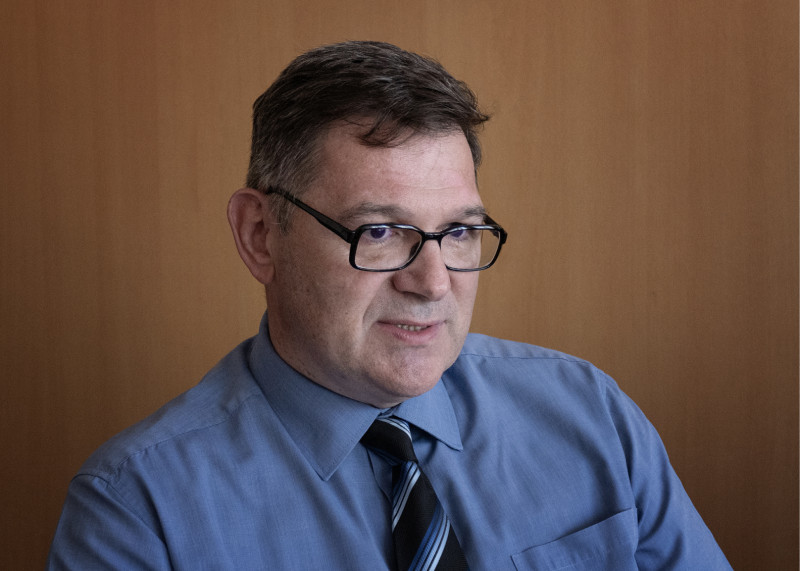
László Bognár has been active as the breeding and business director since 1995.
GREAT PRODUCTION
The level of milk production for the Hungarian cow is high and standard production (305 days) is great. If we look at the best cows, we find the Montross Jedi daughter Sári with 26,825kg (59,015lb) of Erdőhát Ltd. and the Jonas daughter Bánat with 23,350kg (51,370lb) from Berek-Farm Ltd. at the top. The best-producing young cows in the last two years were the Jungle daughter Kifli of the Solum Ltd. with 19,414kg (42,711lb) and Alkony (Spark-Red) of Kinizsi 2000 Ltd. with 19,048kg (41,906lb). Currently, the best active cow for lifetime production is Irma (Justice) of Gorzsai Mezőgazdasági Ltd. with 159,878kg (351,732lb). The Hungarian record holder since 2018 has been Begonia (Mountain x Dollar), who produced 160,839kg (353,846lb) with almost 9,000kg fat and protein in 12 lactations. If we look at the best breeding value animals, we find Káró (Winstar-Windsor) with 1752 HGI at the top. She is followed by the Giround daughter Vércse with an gHGI of 1733.
